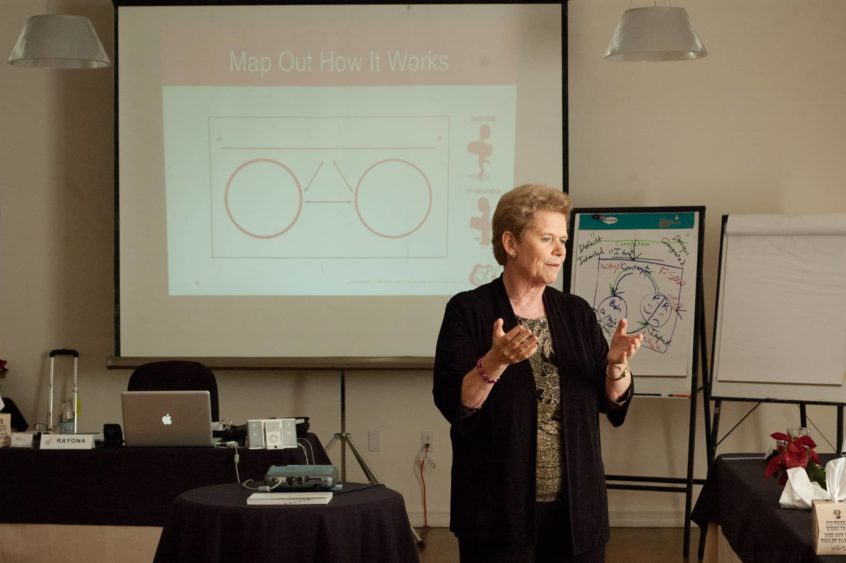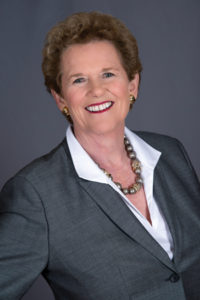
The U.S. has become a nation of quitters.
“If you look at the data, there’s no doubt that the so-called ‘quits’ are rising,” says Robert Eyler, Ph.D., professor and chair of economics at Sonoma State University. Nationwide, the quit rate reported by the Bureau of Labor Statistics, through September 2021, was 4.4 million, slightly up from August, according to Eyler. “How much of this is a structural change, a shift toward some new paradigm, is still unknown,” he says. “The basic idea is that the number of quits instances where employees discontinue their employment, either by resignation or voluntary separation is on the rise, by about a million people more than last year.”
Who are these people? And why are they quitting? Are they burned out? Looking for advancement? Change of lifestyle? And what can employers do to get them back, or find suitable new recruits?
The pandemic and employee attrition
While the pandemic caused drastic changes in workplace patterns, prior statistics show a gradual tendency, long before COVID-19, of people to move away from the workplace, as jobs shifted from manufacturing toward service industries. When the pandemic struck, the effects of the shutdown of schools’ day-care centers and other businesses were highly visible. But why didn’t employees rush back to work in 2021 when businesses, schools and daycares opened up again?
A brief scroll through headlines on the subject will suggest that the “great resignation,” is driven predominantly by women. Graphs featuring the rates of burnout and exhaustion since 2020 show the disproportionate effects on working women. Rayona Sharpnack, CEO and founder of the Institute for Gender Partnership and the Institute for Women’s Leadership, says women are still carrying more than their share. “Women have been bearing the unbalanced weight of parenthood for a very long time,” she says. “Obviously, COVID-19 doubled down on that and required even more from them, including Zoom school and elder care, and child care for the really little ones,” she says. When you’re staring into what looks like a death march (not death by COVID-19, but death by exhaustion), she adds, there’s a point at which women draw the line because it’s not sustainable. They are done, and they’ll do whatever they’ve got to do to cut back.

Then there are some women for whom there may be appealing options in the workplace, if their employers are sensitive, which may include new bonuses, perks, promotions and a significant increase in compensation. “So depending on where the woman is in her leadership journey, some of that becomes very compelling,” says Sharpnack.
Still, after nearly two years of the pandemic, people are tired. Women are especially tired, and it’s not hard to imagine why women would be at the forefront of “the great resignation.”
Sharpnack, who works with CEOs and human resources directors in Fortune 500 companies, says she has done countless exit interviews with highly successful women, who were quitting their jobs––but had been praised in their HR files for being among the organization’s top five “high potentials.” Why were they leaving when they had been so well regarded? The answer she got back, over and over, was one or another version of, “Nobody ever told me that.”
The effect of being ignored is something women understand very well. Women––people––thrive on positive feedback. “It doesn’t seem to matter how much education or quality high-performance reviews they have, women still carry this burden of insecurity, and it gets reinforced all the time,” says Shapnack. “It’s death by a thousand paper cuts.”
Women who own successful businesses tend to be particularly sensitive to their employees and strive to keep their team culture together, even as everyone is worn out from the good fortune of having so much business now. “The demands and the expectations and the needs are higher than they’ve ever been,” says Karen Alary, managing partner of The Personnel Perspective, an HR consulting, leadership training and recruitment firm with offices in Napa and Santa Rosa. “The challenges I hear every day from leaders are, ‘I’m short of people! I can’t find them. Where are they?’” Though business is good now, she says, everyone is feeling more pressure than ever before. There is plenty of work to be done in every company, yes, but every business is short-staffed. “Our recruiter is spending a large part of her days sourcing qualified candidates and uncovering new sources,” she says.
Who’s leaving and why
Who are these great resigners? According to Alary, the people she sees “jumping ship,” are for the most part at the manager-supervisor level and below.
Many are looking for work they can do from home. She’s had job seekers at the director level bowing out of the recruiting process because they don’t want to come into the office. “Most people are okay coming back [to the workplace] and want to, but there is another group that’s making it known that they’re only working from home. Alary allows that there could be many reasons for this, including health and safety reasons, but primarily, it’s that many people prefer to work from home these days. “During the last 19 to 20 months, people have had a chance to reevaluate their lives and their careers, rebalance and reprioritize, and that may also be part of the mass exodus,” she says.

“Our recruiter is using more varied and newer resources,” says Alary. Employers are paying higher and higher salaries, but are starting to “cap out.” She hears from business leaders on a weekly basis that they just can’t pay anymore; they’ve reached their ceiling. Alary tells a story about a mid-level management position offered to a candidate for a salary in the mid $100,000 range; the candidate countered and asked for another $100,000. The employer walked away. “That’s extreme, but we’re hearing that companies are paying a lot more than they used to in order to secure good workers,” she says. “But it will stop. It’s unrealistic to think employers have an unlimited supply of money for salaries and perks. You can’t just keep going. Companies just can’t do it.” She’s hoping that in the end, it will all balance out.
The Personnel Perspective has managed to function well during the crisis, thanks to her team, which pulled together, that made it all work. “Our team was phenomenal,” says Alary. “It was just an amazing team effort.” They adapted to the remote pattern, and they remain flexible, with the team working at home, or in the office. “Now they come into the office whenever they want. Tomorrow I’m bringing everyone together to have lunch in the office.” All of this is new, complex––and tiring. Is there a secret to keeping this all working? “I think it’s the caring and compassion,” says Alary. “We’re here to help our business community. And so that’s what we identified with.”
Flex and reach
A company as large as Nelson, which has postings for jobs from California to Manhattan, has felt the pinch too and learned to adapt. Joe Madigan, CEO, sees the great resignation as an opportunity for companies and individuals to alter their patterns and adjust to new challenges. “Where we really see the ‘great resignation,’ he says, is in individuals who, because of a work-from-home status, or work-remote-status, have more availability, more opportunities than they did before. Some people have adapted well working from home and they’d like to continue to do that.”
In the current climate where opportunities for jobs are many, job-seekers are picky if a candidate can find a job and still work at home and make a good living, that will likely be the preference. “Work productivity still has to exist,” says Madigan. “Everybody has to be accountable. Whether you work remotely or on-site somewhere. We’re finding that the employees looking for flex time or some sort of remote time are not having a difficult time finding jobs. More challenging, from the recruiting aspect, is finding employees wanting to work full-time in an office. Ideally, depending on the company, employees can have hybrid options for both remote and in-office work.
“We’ve had our fair share of individuals who have left the organization because of compensation increases elsewhere,’’ Madigan adds. “We’ve gone through our share over the last two years of having to manage the process and working with our employees who want to continue to work from home, vs. those who really aren’t set up to work from home. He acknowledges that people used to working in offices miss the congeniality, the human interaction, the jokes and simply being recognized by others in the course of the day. But now, having adjusted to working at home, many are reluctant or refusing to return to the office space, despite the isolation of working remote.”

Nelson has responded to this by making space for those employees working remotely who want to come into the offices from time to time. “We have offices open for them, even if it’s just to go on a respite day away from their kids, or who knows,” says Madigan. “They enjoy going in—just to have a break, have a change. Everybody is at a different stage. So we’re impacted like every other employer.”
There are also the people who quit their jobs because they can afford to quit. Individuals with real estate or investments in the Bay Area are quitting, and there are those who choose to relocate and forego the fun of commuting to the office. “We saw it continuously,” says Madigan. To him, it makes sense. “Say, I was a young person living in San Francisco because I had to report to an office in San Francisco, and I was being paid fairly to live in San Francisco. All of a sudden, my employer says, ‘Hey, you can work from home just as long as you get your work done.’” An employee may opt to move to Austin, Texas, for example, dumping a $3,000 a month rent to pay a $1,000 per month rent. In that sort of situation, says Madigan, the employee got a raise. Currently, Madigan has employees working in 11 different states. “And we’re okay with it, as long as they can continue to stay productive.”
Remote, but engaged
Engagement is a keyword in the discussion of remote working success. “The engagement level with the remote employee has to be on a higher frequency than it was when they were in the office,” says Madigan. “So, our engagement with the employees is up. We’re typically doing Zoom calls as a team in the morning, some are doing them three times a day, and others are doing them twice a day. Once a quarter, managers need to get their teams together so if they have to fly somebody to California, that’s what we need to do.”
Human contact, within the remote work model, is not only still possible; it’s required. It’s necessary for success. It just takes more intention, more planning, more communications skills and more determination to maintain that engagement. Simple? No.
Navigating a paradigm shift
How does an employer make the best of a paradigm shift? Leap Solutions Group, Inc., based in Santa Rosa, offers support. “We do facilitation, organization development, executive coaching, human resources and executive search, so we’ve got a lot going on,” says Chuck McPherson, a partner at Leap Solutions. He and his company are well prepared for the candidate mantras of the times: Is this full-time? Do I have to be in the office? Can I do it two days a week remotely?
McPherson’s answer, to get it out of the way, is, “It depends on the job.”

From his perspective, the desire to work remotely can span the whole age range and apply to men and women alike. “It’s hard to say that only the 20-somethings or 30-somethings are demanding remote work,” he says. “I’m seeing people in their 40s and 50s who say, ‘I can do this work remotely,’ or ‘I’d like to be remote because it provides me more flexibility.’” It depends on the person and the open position.
However, McPherson acknowledges that those in the older cohort are more likely to quit and do something else with their lives, especially if they have real estate, retirement funds, or other assets and can afford to cut back on income and coast on their assets. “We did see more attrition in the 50 and 60 age group,” says McPherson, “because they re-assessed their lives during COVID-19.” Other people, even younger, decide to pursue other opportunities, he adds, so they take a chance and jump.
Workplace and company culture
What do employers have to learn in a shifting paradigm? In McPherson’s experience, employees, for the most part, want to improve the workplace and the company culture, and where there’s almost always room for improvement, those in leadership positions may be reluctant to listen or spend the time or money to implement change.
“This can be very expensive,” says McPherson. “Considering that the cost of recruiting someone is 25% to 30% of a base salary, it will mean thousands of dollars just to fill a position,” he says, adding that this is a kind of high-level false economy. “They’re stepping over dollars to pick up pennies in some cases.”
This doesn’t mean that employers must open the company wallet and throw everything they demand at employees, but to start to open up their minds and see what’s happening, and get creative. Companies should consider what they have to offer potential candidates. “Maybe we offer something that others are offering, or maybe we offer something others aren’t offering,” says McPherson. “But first, those in leadership need to be receptive to identifying the company’s problems and to be committed to improving.”
The willingness to improve is key to getting started, says McPherson. Once leadership commits to making improvements, the next step is to conduct a survey of employees and review what they have to say. These are essentials to understanding what people are experiencing and needing and want to improve. “If you ask for feedback from your employees, and then you don’t do anything with it,” he says, “you’re absolutely at risk for attrition.”
“Sometimes the leadership team is saying, ‘I’ve had 10 complaints about this, or people are concerned about that.’ And then you have to dig in and explore and understand and try to come up with a mutually desired outcome,” he says. Working remotely or offering flextime is one example. “Some employers never believed that employees could be as productive from home,” says McPherson. How well the arrangement succeeds depends on the work-at-home policies and the indicators or measurements around productivity.
At Leap Solutions, for example, two employees work out of state, full-on remote, with an agreement that they will come to the office either once a month or once a quarter. “The onus is on both the employer and the employee to make it work,” says McPherson. Both must put effort into it. “My business partner and I have to make a conscious effort to engage each of those remote employees,” says McPherson. “We have our Friday Team Meeting on Zoom. Everybody sees everybody’s face. The employee can’t just go hide at their house. So, it’s a two-way street.
Communication in the workplace
When communication fails or lapses, says McPherson, the consequences can be expensive. “Assumptions get made, possibly deliveries fail, or the product quality slips because there’s a lack of questioning or checking or feedback,” he says. “There are a lot of things that can go wrong when communication isn’t at its best.” At Leap Solutions, they are constantly coaching both employees and employers on how to achieve effective communication.
“First of all, if a leader doesn’t communicate well, then employees are left to their own devices to determine their productivity and their outcomes. Clear expectations are important. Having continuous team communications around what’s working and what’s not working and checking whether the expectations are being met is essential.
Other than communication and engagement, there’s one more essential quality to making remote––or really any teamwork––work, he says. “You have to assume good intent. Nobody comes to work to do a bad job,” says McPherson. “They just don’t. We help people understand who they are, what their communication styles are, what their leadership styles are, what their backup styles are, [and] how they interact. We do a lot of work around behaviors and behaviors obviously drive communications. The most important thing is to understand your own communication style,” he says. “Because once you understand your style, we can assess what the other’s [style] is. You can never expect someone else to make an adjustment. You have to make the adjustment.”
Did You Know?
The Bureau of Labor Statistics shows that across the country, as of Dec. 3, 2021, employment has risen by 210,000 in November 2021 in all areas except retail. The unemployment rate has declined to 4.2%. But the quit rate, in California, has risen to 3%.
Source: bls.gov
Tips from the Pros
In normal times—whether at home or at work, on-site or remote—good communication is at the top of the list when it comes to creating a happy, productive workplace and business matters generally work smoothly. During these pandemic times, when everyone is stretched in one way or another, and remoteness from others is part of the norm, valuing communication, learning how to improve it, is even more important. So where do companies begin to address workplace situations and imagine improvements?
“The No. 1 thing is engagement,” says Joe Madigan, CEO of Nelson. “Be visible to your employees and have a high level of engagement. And expect the same thing from employees. And those employees looking for remote work—there’s plenty of remote work out there, which means that corporations need to always keep that in mind so they remain competitive in attracting and retaining the top employees.”
Communicating for engagement is key, according to Chuck McPherson, partner, Leap Solutions Group, Inc. “Communicating for engagement requires clear consistent messaging,” says McPherson. “It involves openness and honesty; trust and transparency; goals; purpose and direction; and accountability for employees and management. Wherever you start in your process is not the wrong place. And remember, your people are the foundation of your success,” he adds. “You have to be deliberately intentional, so working on the business is critical, versus working in the business. When you’re working in the business, you’re spending less time supporting and developing your employees and clients.”
Sonoma State University’s Rob Eyler, Ph.D., advises patience. “The most important thing is to think and recognize that we had a deep recession, [and] it takes time to climb out of it,” he says. “We are now in the latter stages of recovery. We’re kind of sorting things out.” For employers, he also advises addressing safety in the workplace. “Recognize that people are concerned about the work environment, so the more employers can talk about worker safety, and the good things about coming back to the office, the better.”
“We all know that the workers are missing,” says Karen Alary, The Personnel Perspective. “The shortage of workers is hurting every business we work with. But there’s so much happening in business right now—expectations are high, deadlines are short and burn-out is on the horizon. People are working harder than ever. I remain optimistic that everything will rebalance and right itself, and we’ll be back on track with a healthy level of productivity balanced with realistic expectations for our employees.”
“There are so many things that people can do,” says Rayona Sharpnack, founder and CEO of the Institute for Women’s Leadership. “But you need to have a mindset that what you do makes a difference. You can argue that both ways: Nothing I do makes a difference, or anything I do can make a difference. I choose the second.”



